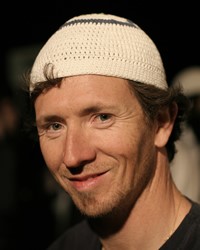One of the unique features among European Jews is the distinction between the Ashkenazic Jews and the Sephardic Jews. The word Ashkenaz is derived from a biblical word for the larger Germanic region of Europe. Therefore, Ashkenazim Jews are those whose ancestry is linked to that area. This group traditionally speaks the Yiddish language, which is a German dialect that has Hebrew and Slavic elements. There are two basic Yiddish languages, one is called "Western" and the other is called, "Eastern." The latter developed in Eastern Europe (including Belarus) and Russia.
Like Jewish populations elsewhere, the Eastern Yiddish speaking Jews in Belarus faced pograms and persecution at various times during their history. For this and other reasons, a large percentage of them emigrated to Israel after the Soviet Union fell in 1991. Half of the Jewish people in Belarus live in the capital city of Minsk.
Because of the uniqueness of their history and culture, Yiddish-speaking Jews have a strong sense of identity. Persecution of and discrimination against the Jews have been the historical reasons for their migrations and settlements in other parts of the w
For religious Jews, God is the Supreme Being, the Creator of the universe, and the ultimate judge of human affairs. Beyond this, the religious beliefs of the Jewish communities vary greatly. Orthodox Jews generally follow the traditional religious beliefs and practices found in the Jewish literature that interprets Scripture regarding ethical, religious, civil and criminal matters. Conservative Judaism is less traditional than Orthodox and combines different ethical, philosophical, and spiritual schools of thought. Reform Judaism is the most liberal form and interprets Jewish beliefs and practices in light of contemporary life and thought. Reform Jews do not believe that the Jewish Law is divinely revealed. They are not restricted to kosher (traditional, approved) foods, nor do they wear the skull cap (yarmulke) when praying or use Hebrew in prayer. All religious Jews believe in the coming of a Messianic Age, but only the Orthodox Jew looks for a personal Messiah.
The Jews understand their connection with the Abrahamic covenant. However, they also have a history of rejecting Jesus Christ as Messiah, the one who fulfilled that covenant. Jewish people need to understand Jesus as the fulfillment of what God promised humanity through Abraham centuries ago.
Unfortunately, "Jewishness" is often defined in secular terms such as the use of Yiddish words and family traditions, rather than in spiritual aspects, such as looking to the God of Abraham for all their needs. This attitude keeps Jewish people from finding spiritual truth that would lead them to their Messiah.
Pray for believers to reach out to the Jewish community in love.
Pray for a spiritual hunger among Yiddish speaking Jews in Belarus that will lead them to their messiah.
Pray for Yiddish speaking rabbis to emerge who will disciple others in the ways of Yeshua, Jesus.
Pray for the Holy Spirit to guide and thrust out workers to the Jewish communities in Belarus.
Scripture Prayers for the Jewish, Eastern Yiddish-speaking in Belarus.
https://yivoencyclopedia.org/article.aspx/belarus
https://en.wikipedia.org/wiki/History_of_the_Jews_in_Belarus
https://joshuaproject.net/people_groups/12350/LG
| Profile Source: Joshua Project |












